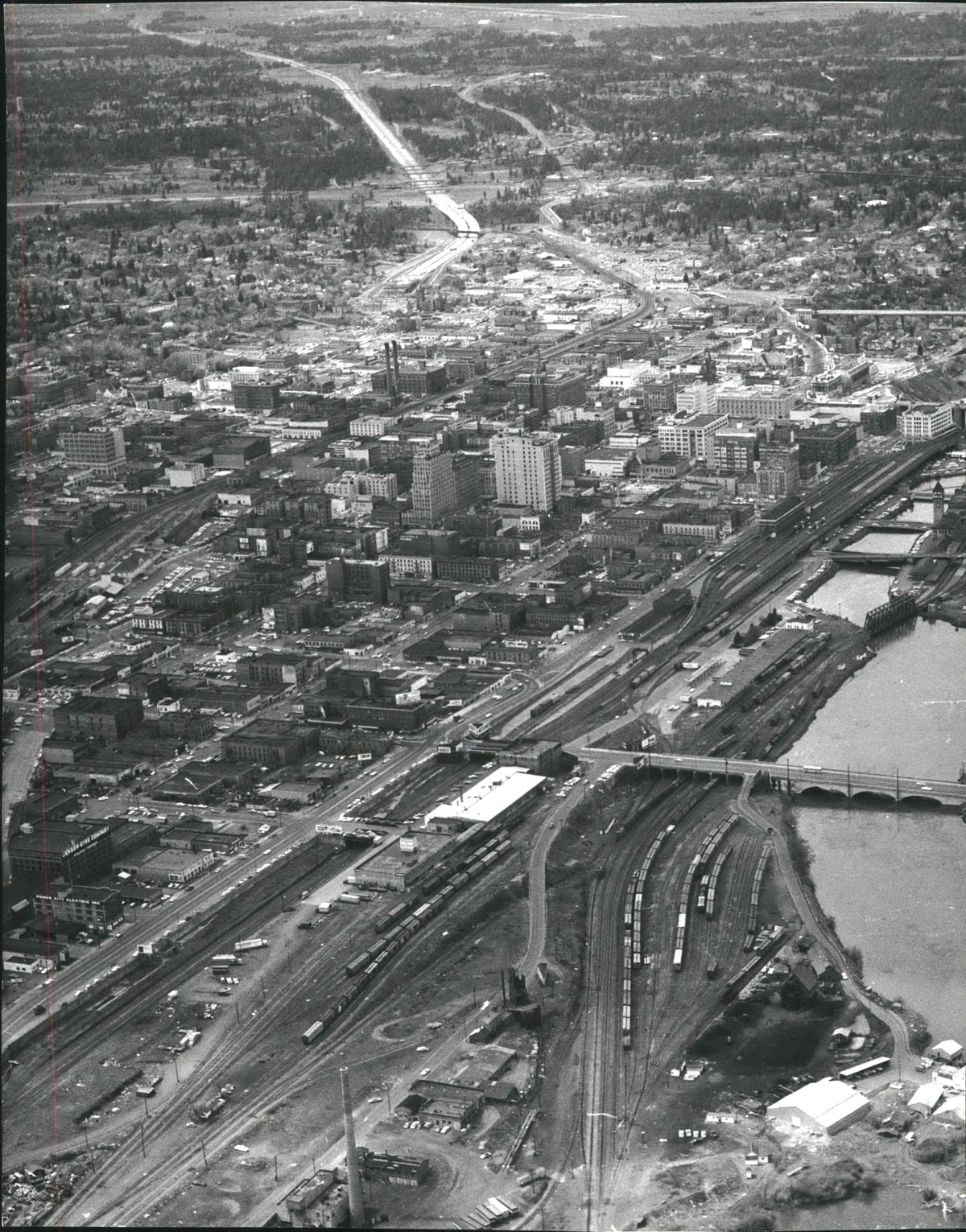Then and Now: Transcontinental railroads

Since the 1890s, Spokane was often touted as a hub for four transcontinental railroads, the implication being that it was a good place to do business and ship goods across the U.S. continent.
The first transcontinental claim was the Union Pacific (UP) joining the Central Pacific in 1869. Most rail companies claimed transcontinental status because of connections to major Midwest cities.
Even with multiple carriers, Spokane was sometimes the victim of price fixing. In a 1909 complaint to the Interstate Commerce Commission, shippers said that goods sent from Chicago to Spokane would be charged for shipping to Seattle, plus the cost back to Spokane, an extra 640 rail miles. Newspaper editorials said the rates “strangled” local business. The ICC called it unjust and ordered a one-sixth reduction in rates from Chicago and Minneapolis in one of many battles over shipping costs.
The first rails didn’t reach Spokane until June 1881. The Northern Pacific (NP) track from St. Paul to the coast cut through downtown Spokane between First and Second avenues, a route that remains active today atop a viaduct created around 1915.
The Great Northern Railroad (GN), assembled by rail mogul James J. Hill, reached Spokane in 1893. A passenger terminal and its signature clocktower opened on Havermale Island in 1902.
A third major connection was when the Union Station opened in 1914 to serve the Milwaukee Road, the Union Pacific and their affiliates.
Important regional lines included the Coeur d’Alene Railway and Navigation line to Idaho’s Silver Valley and the Spokane International line to Canada. The Spokane, Portland and Seattle line (SP&S) connected to Portland via the Columbia River gorge.
The biggest change in a century of Spokane rail was the 1970 merger of the GN, the NP and the SP&S with the Chicago, Burlington and Quincy into the Burlington Northern, simplifying the eventual removal of all tracks around the river in 1972 to make way for the world’s fair, Expo ’74. All east-west traffic was consolidated onto the NP corridor.
In 1994, local universities opened the Spokane Intercollegiate Research and Technology Institute to spur economic development through research. It was a precursor of today’s University District in the former railroad right-of-way.